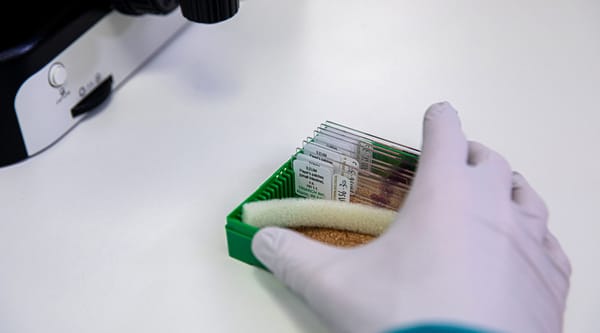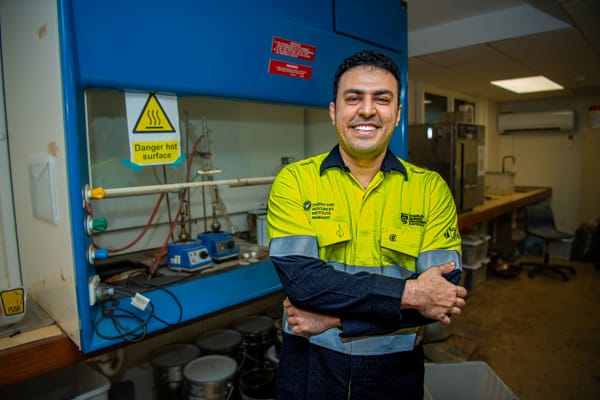Researchers spinning fibers to help the Territory and beyond
The fibers created from electrospinning can be used as in bulletproof vests, filters for water purifiers, and medical equipment.

First published by Charles Darwin University
Researchers at Charles Darwin University (CDU) are using a state-of-the-art nanofiber fabrication facility located at the Casuarina Campus to create fibers that are 10 to 100 times thinner than a spider’s silk to solve some of the pressing issues the Northern Territory is facing.
Nanofibers are lightweight and have a diameter about 1/1000th of a human hair.
It has extremely high surface area-to-volume ratio which acts like a superpower, allowing them to deliver outsized performance in numerous applications. This characteristic means they have an enormous amount of active surface packed into a tiny space, enabling them to interact more effectively with their environment - whether that's capturing light, absorbing impacts, or bonding with other materials.
The fibers created from electrospinning can be used as in bulletproof vests, filters for water purifiers, and medical equipment.
A variety of materials ranging from synthetic to natural materials including collagen, keratin and gelatin can be spun as nanofibers using electrospinning technique, which involves a liquid droplet being stretched and elongated to form the fibers under a precisely controlled electric field.
CDU Faculty of Science and Technology Lecturer in Mechanical Engineering Dr Naveen Kumar Elumalai is leading a team testing the strength and ability of nanofibers to see how they can be used in everyday situations.
Of particular interest to the team is looking at ways nanofibers can help in the defence industry, producing hydrogen from water splitting using sunlight, and in industrial filtration.
Dr Elumalai said vests and other protective clothing could be made from electrospun nanofibers.
“Kevlar vests and other protective clothing which our police and defence force wear are currently quite heavy and lack breathability, which is not ideal here in the NT,” Dr Elumalai said.
“Utilising nanofibers will help to make the vests stronger without increasing the weight. This means that they will offer greater protection for wearers against things such as bullets and shrapnel without making them hotter, this is for sure a win-win.
“We do need to do more research to determine which substance would be the most beneficial, but we are hoping to work with the defence industry particularly here in the NT on the development of these smart textiles.”
Another area where nanofibers have the chance to generate huge opportunities in the NT is with air and water purification.
This is important in remote First Nations communities which often suffer from poor reliability and drinking water quality which can have flow on effects om economic and health outcomes.
“We are trialling the use of nanofiber technology when it comes to air and water purification as the nanofibers can be formed to make a mesh like substance which can help to stop bacteria from entering the water or air and filters out contaminants,” Dr Elumalai said.
“This could really be transformative when it comes to the health and longevity of our communities and is cost effective as well.”
In an exciting development, Dr Elumalai's team is also exploring how nanofibers can be used to generate clean energy. They've created special nanofibers that, when dispersed in water and exposed to sunlight, can split water molecules to produce hydrogen.
"This technology is particularly promising for Darwin and the Northern Territory," Dr Elumalai explained.
"It could help address our energy needs using just water and sunlight, without the need for complex systems. Imagine being able to produce hydrogen fuel directly from water - it's a game-changer for sustainable energy production in our region."
For Dr Elumalai, who in 2022, 2023 and 2024 was recognised amongst the top two per cent of scientists globally for his work by Stanford University, making a lasting impact here in the NT and beyond is paramount when it comes to this work.
“I have always been intrigued by how things work in nature, and I have a passion for exploring things in detail,” Dr Elumalai said.
“I am passionate about clean energy or sustainable materials and related applications that can enable the well-being of the humans and the environment.
“I look forward to furthering our research and working with industry groups to implement nanofiber technology.”




